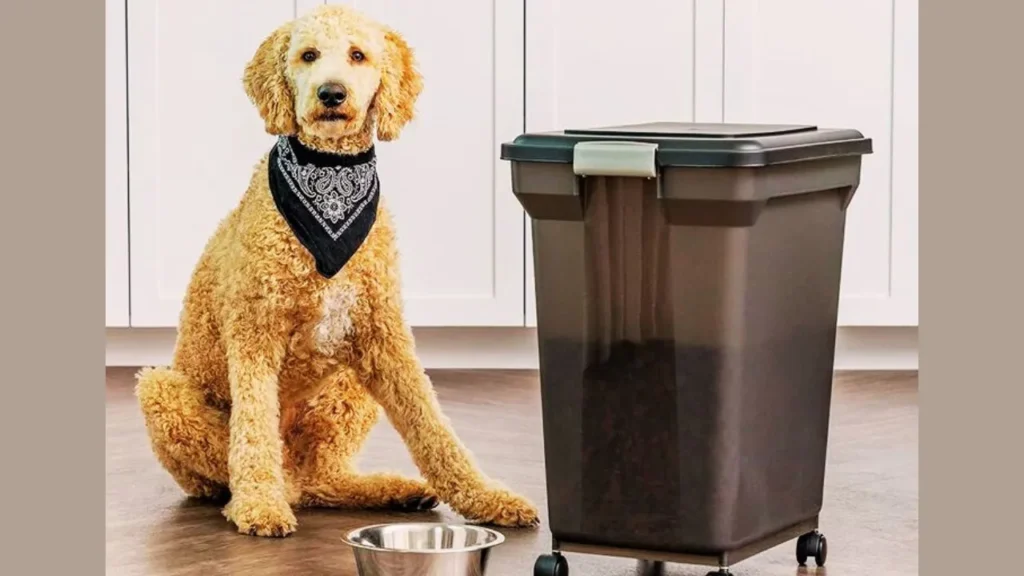
Knowing how to store dog food properly can make a big difference in your pet’s health. When it comes to keeping your dog healthy, feeding them nutritious food is essential. Think about how you could store dog food efficiently if you knew how. Food must be stored properly in order to remain fresh and tasty, retain active nutrients and ensuring your pet’s health.
Learning about the environmental factors that impact dog food, such as temperature and moisture, is also critical. Keeping them inappropriately may waste the food, lose nutrients, or lead to contamination, threatening your pet’s health. These guidelines help you feel good about the safety, health, and flavors of your dog’s meals and give you peace of mind that you are doing all you can for your dog.
Different Types of Dog Food
Dry Dog Food (Kibbles)
Dry food is long shelf life but must be stowed in an airtight container to avert oxidation. Kibble must also be kept away from moisture to prevent mold.
Wet Dog Food (Canned)
Bacteria love moist environments — and damp food has plenty of moisture once you open the can. You should refrigerate opened cans and use them within a few days.
Raw Food Diets
Raw diets are becoming more common, but handling and storage must be more careful. It can contain bacteria such as Salmonella or E. coli. It needs to be kept frozen until it is about to be served and kept apart from other foods.
Homemade Dog Food
Homemade food does not contain preservatives and spoils more quickly than commercial products. Food quality depends largely on various factors including air, light, temperature, and moisture. Control these factors to keep your pet’s meals as nutritious and tasty as possible.
How to Store Dog Food
Store dog food according to what kind of food you feed your dog. knowing them will help you keep your dog’s food fresh and safe.
Dry Dog Food
Kibble, or dry dog food, is well-known for its convenience and long shelf life.
Storing Dry Dog Food: Dry food should be kept in an airtight container away from air and moisture. Use food-safe storage containers made of high-quality plastic, stainless steel or glass.
Best Location: Store dog food in a cool, dry place. Pantries or cabinets are ideal. Avoid storing kibble near heat sources or in direct sunlight, as these can diminish its quality.
Wet Dog Food
Storing Wet Dog Food : Refrigerate any opened cans of wet dog food. Use an airtight cover or lid to keep the food fresh and prevent it from absorbing odors from your fridge.
Storage Tip, Long Term: If you don’t eat the opened food within a few days, freeze it in portions. This way you can defrost it when you need it while keeping it fresh.
Raw Dog Food
Raw diets are high in nutrients but must be stored cautiously to prevent contamination.
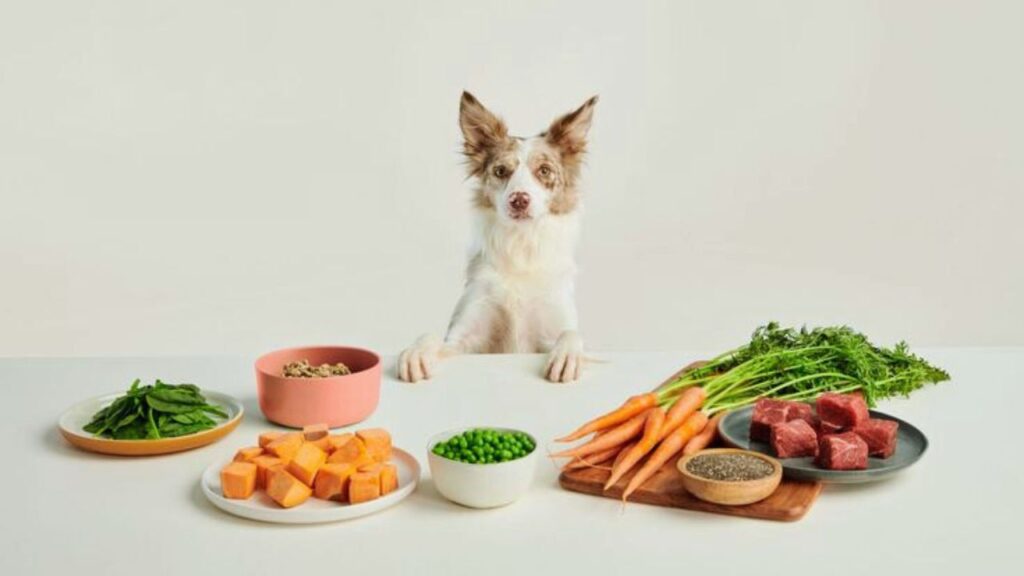
Dog Food Storage: Store raw dog food in the freezer until ready to serve. You need in the refrigerator instead of at room temperature to prevent bacterial growth.
Safe Handling : After handling raw food, wash your hands and clean all surfaces, utensils, and storage containers used to avoid cross-contamination.
Homemade Dog Food
Short-Term Supply : Homemade food should be refrigerated if you plan on using it within a couple of days. Keep it fresh in airtight containers.
Freeze if storing longer: For homemade dog food freeze more significant amounts by meal size. Labeling containers and noting the date will help you keep track
Choosing the Right Storage Containers for Dog Foods
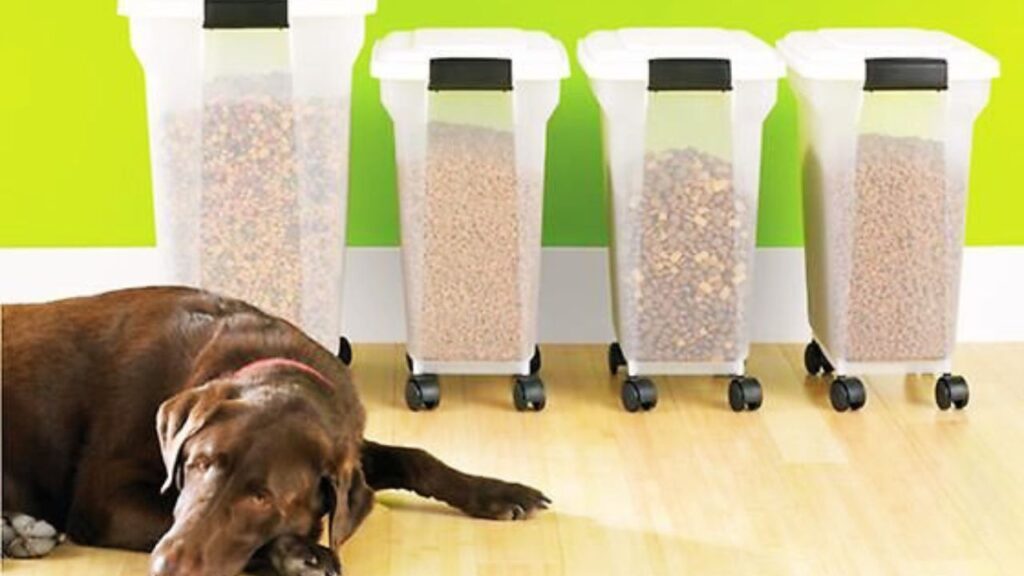
Choosing the correct storage container is key to store dog food properly. Not all containers are equal and the material can significantly affect how well the food will last. Consider investing in suitable plastic or stainless steel containers that seal airtight. These containers create airtight and moisture-proof barriers and can be a quick way to spoil food. You are looking for one that is similar in size to what you usually buy in dog food. Stay away from large containers because once opened, they will let the exposure to air last longer. A tight fit prevents your dog’s kibble from stalling before the next refill.
Choose airtight containers with secure lids that are simple to open and close. You’ll appreciate the convenience when it’s time to serve your dog, and your pup will devour every morsel as if it were fresh from the bag.
Airtight Dog food Container
20-23 Lbs. Collapsible Pet Food Storage Container
This collapsible dog food storage container will help keep your pet’s food fresh and organized. This well-designed container holds 20-23 lbs. of dry dog food. It can easily combine with attachable casters to move it around effortlessly, a scoop for easy portioning, and a silicone bowl for travel feeding.
Gamma2 Vittles Vault Stackable Pet Food Storage Container with Airtight Lid
The Gamma2 Vittles Vault Stackable Storage Container is the answer for stocking up on dry pet food and keeping it fresh and flavorful. This sturdy, BPA-free container holds 60 pounds and is great for storing bulk dog food, cat kibble, or other pet supplies.
IRIS USA Airtight Dog Food Storage Container
With the Airtight Dog Food Storage Container from IRIS USA you can help keep your pet’s food fresher for longer while also keeping it organized. It can accommodate up to 30 lbs of pet food, and this is an ideal pet food storage for dog food, cat kibble, bird seed, or whatever your pet needs. The sealed-in closure seals in freshness and keeps out moisture and pests, keeping your pet’s meals as tasty and safe as possible. It also has attachable wheels for moving around which are convenient and versatile. Your kitchen deserves it.
How to Keep Them Fresh
Why is Keeping Dog Food Fresh Important? Airtight containers are great at preservation, creating a seal that expels moisture, pests, and air. The longer food is free from these factors, the longer it will stay edible.
Considerations for Size and Material
Choose a storage container that’s big enough for the amount of dog food you routinely purchase but also makes sense for your space. It should be large enough to store an entire bag but small enough to glide into your pantry or other storage space. opts for BPA-free plastic or stainless steel for durability and safety.
Cleaning and Maintenance Made Easy
Hygiene is key to keeping your dog’s food safe. Choose containers that are smooth and have removable lids to make them easy to clean. Regular washing stops oil and residue buildup, which causes odors and contamination.
Proper Storage Locations
Selecting a location is as vital as the method of dog food storage. We recommend keeping your storage area cool and dry from sunlight or heating elements. Set aside a shelf or pantry space for pet food. If that’s not possible, choose a room out of the way for curious pets and children. Don’t store food in damp places, such as bathrooms or garages, where moisture can get in; keep the storage area clean to discourage pests and create easy access when it’s time to feed?
Common Dog Food Storage Mistakes
The most conscientious pet parents can make mistakes when storing food. One common mistake is keeping food in the same original packaging after opening. Bags do not fully seal against air or bugs getting inside the food. As an alternative, put the food in a safe container.
A second mistake is to save food in places exposed to direct sunlight. Sunlight can raise temperature and humidity, making the food spoil faster. Choose a shady space to maintain the integrity and nutrition of the food.
Finally, remember to routinely clean storage containers. Heavy residue buildup can attract pests and encourage fungus or bacteria to thrive. Thus regular cleaning makes a safe and fresh storage place for your dog’s meals.
Consider This When Storing Dog Food
Now we know that store dog food means taking these into account:
Temperature: Dog food should be stored somewhere cool place between 40-70°F (4 and 21°C)
Humidity level: If the humidity is low for dry dog food it will not absorb moisture and will prevent moisture and mold.
Location: Store food indoors, out of direct sunlight, and in a safe, dry area.
How to Storing Dog Food clean and hygienic
Cleaning the storage area is as essential as storing the food properly. Ways to exercise hygiene to preserve food quality:
Clean Storage Containers Often: Oils in kibble can stick to containers over time. Regular washing helps to prevent odors and keeps food tasting fresh.
Wash Bowls and Utensils Daily: Dog food and water bowls can harbor bacteria if not washed out frequently. Rinse out bowls after each meal and wash with soap and water.
Expiry date management and Batch tracking
Being mindful of expiration dates is essential to keep your pet safe. Expired food loses nutritional value and can even be harmful to your dog. Regularly check expiration dates and use older batches first. Establish a first-in, first-out system to eat food promptly
Enter purchase dates and batch numbers. This practice can be helpful in the rare instance of a food recall, quickly identifying which spoiled products are on your shelves. We help you avoid spoilage by monitoring expiration dates and tracking batches.
Innovative Storage Solutions
Storage ideas for dog food take full advantage of the space and offer quick access when needed. A stackable container or bin that fits your pantry or cupboard will work out the best. Wall mounted dispensers are another innovative product designed for pet owners with small spaces. These dispensers make it easier to keep food off the ground so that it doesn’t spoil quickly and is easy to portion control.
Portable storage containers are handy and straightforward to use, which makes them convenient for busy pet owners. Choose options that have locking lids to deter spills and keep things fresh. These new features will make your pup’s feeding even more perfect and ensure that food remains fresh for a long time.
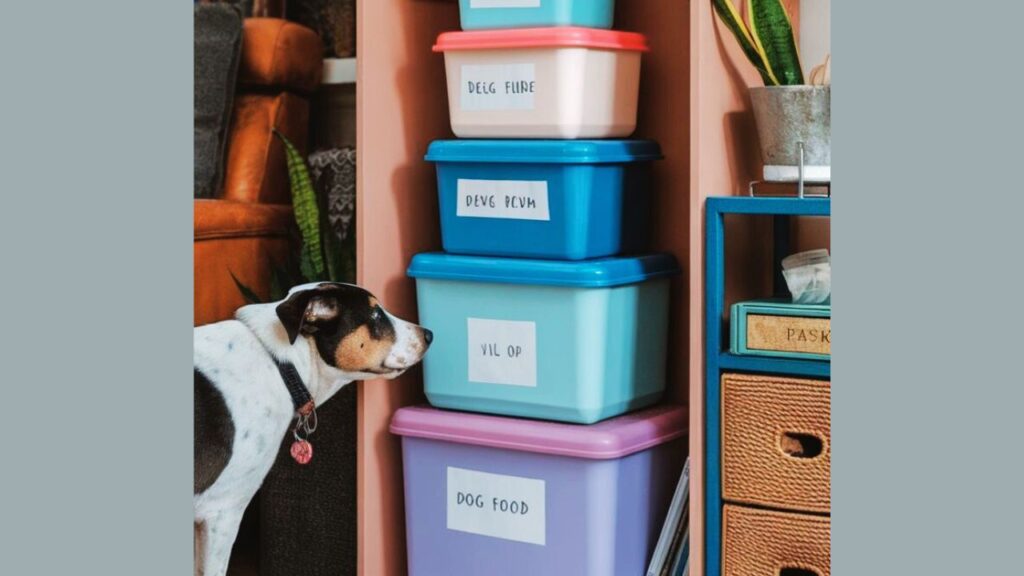
FAQ
How long is dry dog food good for once opened?
Dry food will generally stay good for up to 6 weeks once opened if stored in a cool, airtight, airtight container, but for best freshness, it’s best to feed it within about four weeks.
Can dog food be frozen safely?
Yes, raw dog food can be frozen. Dry kibble is usually not needed but you can freeze it in an airtight bag if you want to.
Is it safe to keep dog food in the garage?
Because of changing temperatures, it’s best to avoid storing food in the garage. It’s best to keep dog food inside where it’s temperature-stabilized.
How do I know if dog food has gone bad?
It varies, but common signs are a sour or rancid smell, abnormal changes in color or texture, or mold.
Final Thought
Learn how to keep your dog’s food fresh and nutritious for longer. Your dog’s food will remain fresh longer if you keep your environment airtight and relaxed and avoid common errors. These suggestions will help ensure your dog eats every meal and remains healthy and happy. Storage facility will ensure your pet’s companion’s food is maintained at better quality, taste, and safety levels. These steps help keep your dog’s meals nutritious and palatable.

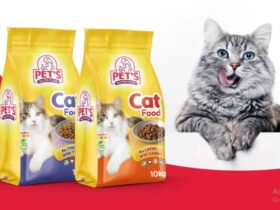
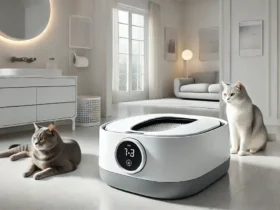
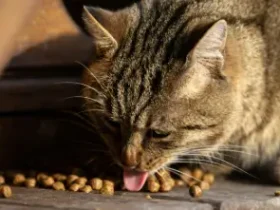



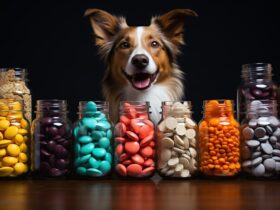
Leave a Reply